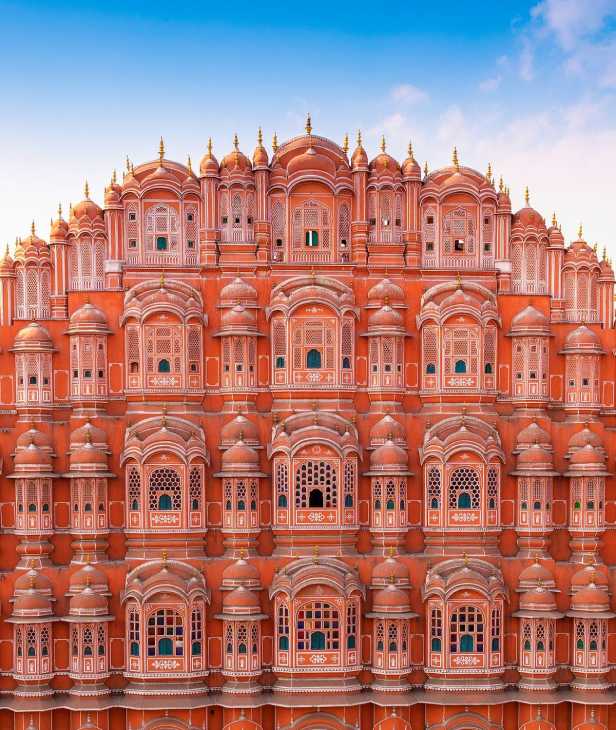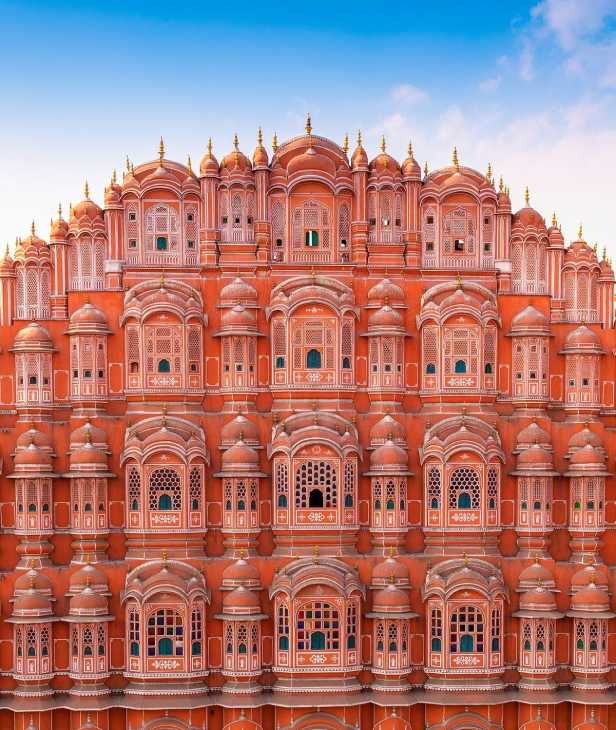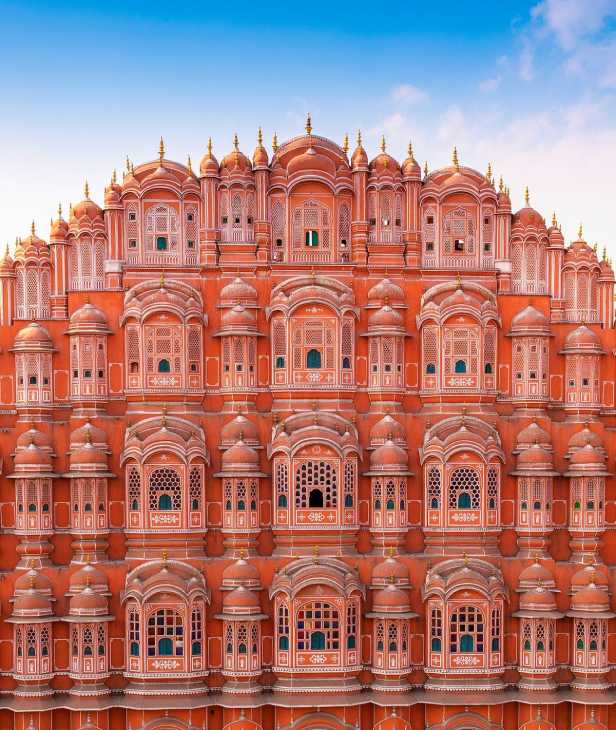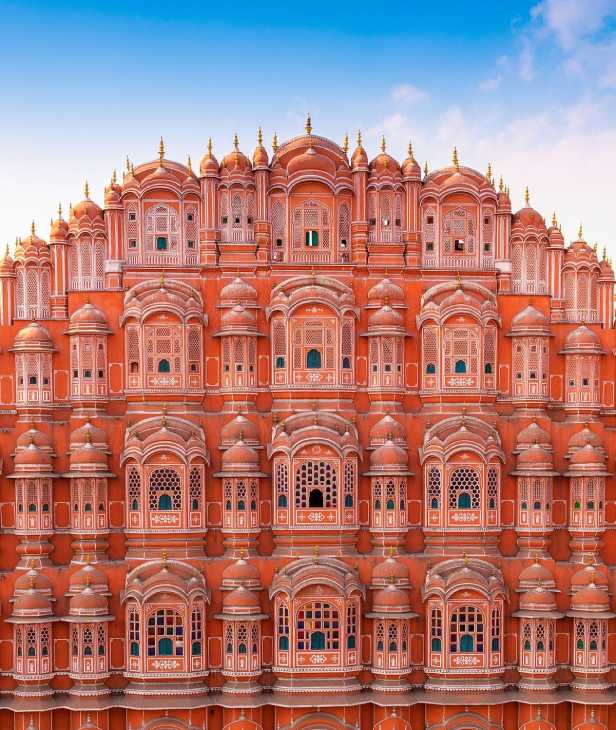
Historical places in Jaipur
India's capital of Rajasthan displays Jaipur as its most historic and architecturally handsome metropolis. In Jaipur visitors find recognition as the "Pink City" because it contains majestic royal palaces together with ancient forts and detailed temples which showcase the great Rajput dynasty. The city comes together as a royal masterpiece under the foundation of Maharaja Sawai Jai Singh II who established it in 1727.
Best Historical places in Jaipur
Jaipur serves as an exclusive destination for those fascinated with history because it maintains a large collection of historical monuments that reveal times gone by. This guide explains in detail about the famous historical sites in Jaipur which travelers should visit.
Amer Fort (Amber Fort)
Overview:
Amer Fort enjoys pride of place on the highest elevation between Jaipur and Delhi which makes it one of India's most breathtaking fortifications. Built in 1592 by Raja Man Singh I the fort contains architectural elements from both Rajput and Mughal styles which can be seen in its royal palaces and expansive courtyards and magnificent mirror art.
Why Visit?
Sheesh Mahal (Mirror Palace): The Sheesh Mahal (Mirror Palace) attracts visitors through its thousands of mirror decorations.
Ganesh Pol: The majestic Ganesh Pol serves as a pleasing entrance point that leads visitors to royal suites.
Light and Sound Show: A nighttime performance at the fort uses lights to depict past glory.
Elephant Ride: A royal experience of riding an elephant up to the fort.
Timings:
8:00 AM – 5:30 PM
Light & Sound Show: 6:30 PM onwards
Entry Fee:
Indians: ₹100
Foreigners: ₹550
City Palace
Overview:
One of the most magnificent royal abodes in Jaipur is the City Palace which continues to serve the royal family who built it. The palace complex known as City Palace stands as a legacy of Maharaja Sawai Jai Singh II who designed the compound along with its multiple courtyards and museums and elegant architecture.
Why Visit?
Chandra Mahal: The private residence of the royal family.
Mubarak Mahal: Houses a museum with royal costumes and artifacts.
Diwan-i-Khas: The Diwan-i-Khas displays the two biggest silver urns present in global collections.
Timings:
9:30 AM – 5:00 PM
Entry Fee:
Indians: ₹200
Foreigners: ₹700
Hawa Mahal (Palace of Winds)
Overview:
During the year 1799 Maharaja Sawai Pratap Singh constructed Hawa Mahal which stands today as one of Jaipur's principal landmarks. The architect of this venue designed this five-story palace with 953 wind-based windows known as jharokhas to resemble Lord Krishna's crown.
Why Visit?
The structure served royal women to see street activities without revealing themselves to the public.
Stunning pink sandstone structure with a honeycomb-like design.
Offers a breathtaking view of the city from the top.
Timings:
9:00 AM – 4:30 PM
Entry Fee:
Indians: ₹50
Foreigners: ₹200
Jantar Mantar
Overview:
The astronomical observatory known as Jantar Mantar stands as a UNESCO World Heritage Site which Maharaja Sawai Jai Singh II built in 1734. The architectural marvel contains the biggest stone sundial that the world has ever witnessed while showing other astronomical measurement tools.
Why Visit?
One of the best-preserved observatories in the world.
Through its design the Samrat Yantra possesses a time measurement precision that reaches 2 seconds.
The ancient observatory receives global recognition as a scientific achievement of India during that period.
Timings:
9:00 AM – 4:30 PM
Entry Fee:
Indians: ₹50
Foreigners: ₹200
Nahargarh Fort
Overview:
The Indian royal family found refuge at Nahargarh Fort when Maharaja Sawai Jai Singh II commissioned its construction during 1734. From this vantagepoint people can enjoy breathtaking panoramic city views that reach their peak during sunset.
Why Visit?
The palace Madhavendra Bhawan offers a network of rooms arranged in a beautiful layout.
Best sunset views in Jaipur.
A popular hiking and photography spot.
Timings:
10:00 AM – 5:30 PM
Entry Fee:
Indians: ₹50
Foreigners: ₹200
Jaigarh Fort
Overview:
The Fort of Victory exists as Jaigarh Fort which Jaipur king Jai Singh II built in 1726 to shield Amer Fort. Jaivana Cannon resides within the fort as the biggest cannon built for wheel mobility in the world.
Why Visit?
Jaivana Cannon: Jaivana Cannon operates as the planet's biggest weapon situated on wheels although it remained unused during warfare.
The fort has hidden underground corridors which lead to Amer Fort.
Scenic views of Jaipur and the Aravalli hills.
Timings:
9:00 AM – 4:30 PM
Entry Fee:
Indians: ₹50
Foreigners: ₹200
Albert Hall Museum
Overview:
The oldest establishment in Rajasthan Albert Hall Museum was built in 1876 and displays a wide range of paintings alongside sculptures and artifacts alongside ancient weapons inside its halls.
Why Visit?
Houses a 2,300-year-old Egyptian mummy.
Showcases ancient coins, pottery, and textiles.
Stunning Indo-Saracenic architecture.
Timings:
9:00 AM – 5:00 PM
Entry Fee:
Indians: ₹40
Foreigners: ₹300
Galtaji Temple (Monkey Temple)
Overview:
Galtaji Temple is an important Hindu pilgrimage spot situated in the Aravalli hills because it contains natural water sources and magnificent temple architecture which attracts numerous monkeys. This temple attracts hundreds of monkeys making it known as Monkey Temple.
Why Visit?
Hindu worshippers revere the natural water tanks at Galtaji Temple because they believe these kunds hold therapeutic power.
Beautiful fresco paintings and Rajasthani architecture.
Offers a serene and spiritual atmosphere.
Timings:
5:00 AM – 9:00 PM
Entry Fee:
Free
Sisodia Rani Garden and Palace
Overview:
In 1728 Maharaja Sawai Jai Singh II constructed Sisodia Rani Garden and Palace specifically for his queen of that name Sisodia Rani. Sisodia Rani Gardens with their Mughal-inspired landscape, flowing fountains, pavilions and paintings show Lord Krishna moving through his life.
Why Visit?
This site provides visitors with a royal interpretation of Jaipur's romantic tales of love.
Stunning frescoes, murals, and pavilions with traditional Rajasthani artwork.
This establishment provides residents a serene environment which removes them from the crowded urban lifestyle.
Timings:
8:00 AM – 5:00 PM
Entry Fee:
Indians: ₹50
Foreigners: ₹200
Panna Meena Ka Kund
Overview:
Panna Meena Ka Kund exists near Amer Fort as a historic architecture from the 16th century that functioned as a stepwell. This water storage facility also enabled travelers and local people to rest during their passageway. Steps with geometric design and detailed architectural elements attract numerous photographers to visit this location.
Why Visit?
The city of Jaipur maintains Panna Meena Ka Kund as its most attractive and intact stepwell structure.
Offers a picturesque setting for photography lovers.
A fascinating example of ancient water conservation techniques.
Timings:
Open all day
Entry Fee:
Free
Conclusion
The Rajput historical grandeur of Jaipur serves as an everlasting museum tour of its history through time. Every section of Jaipur unveils its tales about bravery and cultural innovation and architectural mastery through the magnificent Amer Fort and its companions Nahargarh Fort and Jaigarh Fort along with the decorative palaces of Jantar Mantar and its astrophysical wonders.






